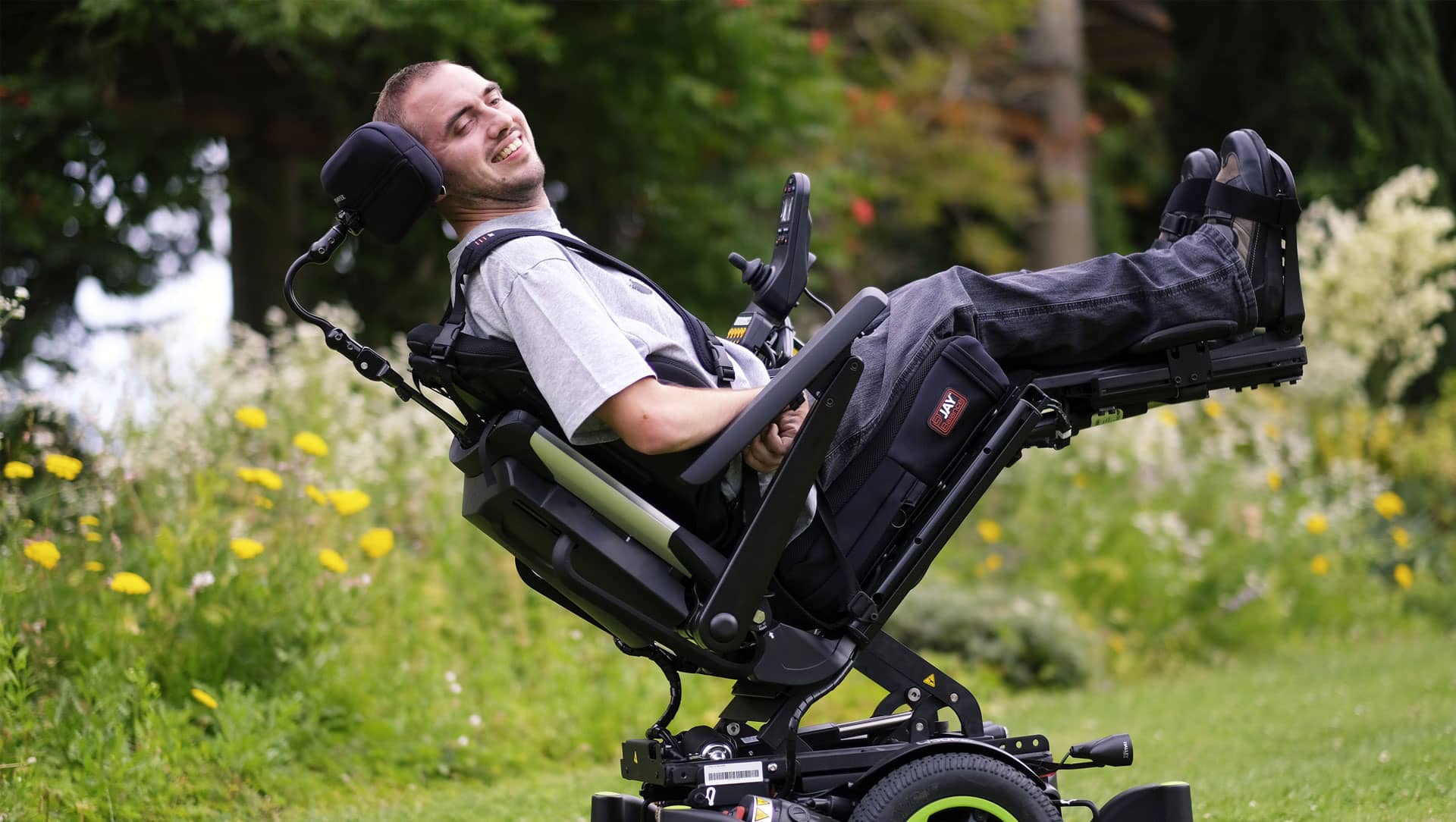When Not to Use:
by Admin
Posted on 01-01-2024 01:09 PM

Justification:
tilting a seating surface in a posterior direction can reduce the effects of gravity on one’s trunk/upper body, which facilitates a more functional and proper upright posture.
 Proper postural control also assists with higher and more practical use of the upper extremities. Posterior tilt efficiently opens the diaphragm allowing for more significant thoracic expansion resulting in improved oxygenation, blood flow, and organ function. The tilt-in-space feature facilitates positioning for comfort, pain management, and pain relief.
Proper postural control also assists with higher and more practical use of the upper extremities. Posterior tilt efficiently opens the diaphragm allowing for more significant thoracic expansion resulting in improved oxygenation, blood flow, and organ function. The tilt-in-space feature facilitates positioning for comfort, pain management, and pain relief.
When individuals are reclined and then brought back to upright, some forward sliding of the pelvis on the seat occurs due to shear displacement. Shear displacement - recliner with a standard pivot point shear displacement occurs because the anatomical pivot point of the hip joint does not match the pivot point of the seat to back junction on the wheelchair when reclined. In contrast, when clients are tilted and then brought back to upright, there is no movement of the body relative to the wheelchair. Quickie iris® the mechanism of tilt on the quickie iris® has a curved rocker-arm that allows the seat frame to rotate on the base frame, while maintaining an individual's center of gravity (cog) in near perfect alignment with the chair's center of rotation (cor).
The purpose of this study is to determine the potential effectiveness of tilt-in-space and/or recline for pressure relief. Data collected over a 10 to 14 day period will provide information including: how often wheelchair users access tilt-in-space and/or recline functions per hour or per day; the most common tilt and/or recline angles, and the percentage of time spent in these angles; the collected data will help determine how often and for how long wheelchair users with tilt-in-space and/or recline achieve a position known to cause at least a 10% and 20% decrease in peak pressure in an hour. It is hypothesized that users will spend more time in a tilted position than in an upright position during the day.
What Are The Benefits of Tilt In Space?
Tilt-in-space is used in many care chairs and riser recliners to help you stay comfortable and healthy when sat down. There are many benefits and we highly recommend you include it in any specifications for client who you think would benefit from it. If you want to try out a tilt-in-space chair for one of your clients, give us a call on 01423 799960, get in touch with us on the website and we’ll be happy to help. For more information on specialist seating and how to prescribe it, take a look at our free specialist seat ebook.

What are the benefits of a tilt in space wheelchair ? answer when we are seated perfectly upright, the weight of our body is distributed on our buttocks, our posterior thighs and the bottom of our feet. There is not a lot of weight that is on our trunk. By tilting someone back, we are redistributing pressure. We are taking some of the pressure off of the buttocks and thighs particularly, and putting it onto the posterior trunk and the back of the head. This helps to reduce some of the pressure underneath the buttocks and thighs. This is important for a couple reasons.
If your body has some weakness from a neuromuscular disease, you probably experience fatigue. “the tilt-in-space feature decreases the effects of gravity throughout the body, which allows the individual to use less energy to sit upright,” penny says. This leaves you with more energy to participate in tasks of daily living and activities you enjoy. Tilting also combats the effects of neck muscle weakness by giving your neck a break from holding itself up. It helps with lower extremity positioning, benefits upper body support, and reduces swelling in feet, ankles, and calves.
For a patient who may be at risk of pressure injuries due to sitting in one position for long periods of time, clinicians focused on wound care such as enterostomal nurses, wound care nurses, tissue viability nurses and also occupational therapists, physiotherapists may use tilt in space to reduce their pressure risk. Tilt in space is an effective method to redistribute pressure off bony prominences such as the sacrum and its. When areas of the body are put under pressure the oxygen levels in cells are reduced due to the mechanical disruption of cell structure and reduced blood flow.
The power tilt option gives the user more control over the position of their body in space and improves comfort by assisting with sitting tolerance. It provides more independence to participate in daily activities and to engage more with the world and others. Power tilt is available for the iris, iris heavy duty, and the sr45.
In this blog post we will go over what tilt-in-space wheelchairs are, the benefits they give to users, best selling tilt-in-space wheelchairs and where to buy.